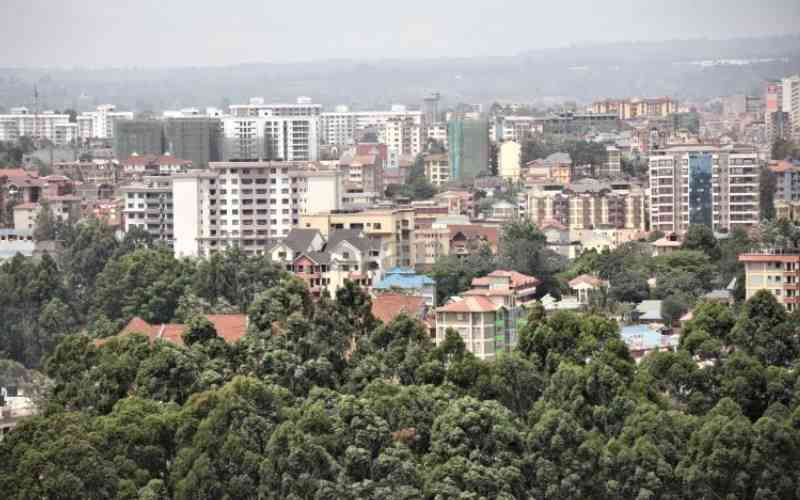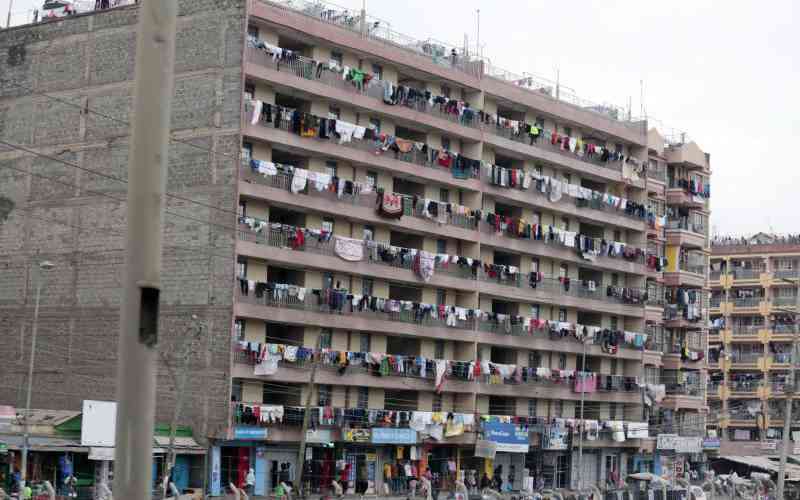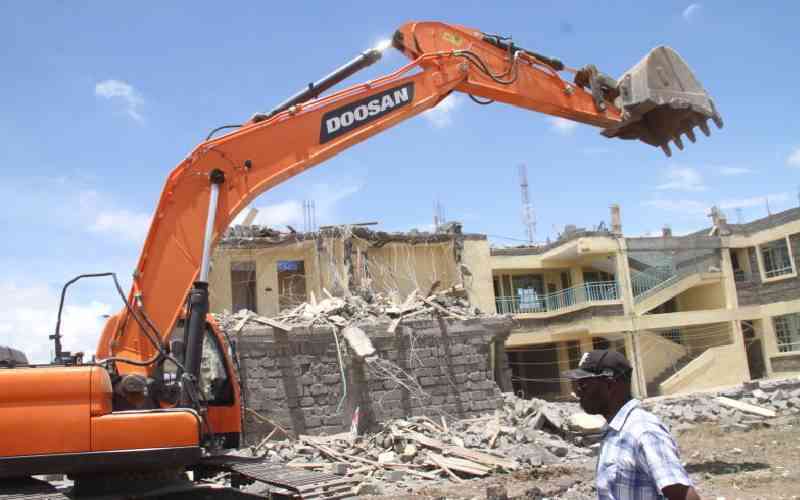The world population currently stands at 7 billion as of UN Habitant report of 2016. The report also reveals that Africa’s population stood at 1.2 billion.
This is a clear signal that urbanisation is rapidly growing and with 70 per cent of the world population living in cities and urban areas, it’s time to consider the UN Habitant City and Urbanisation policies that control development.
Kenya as a country has a population of 53 million according to Kenya National Bureau of Statistic report of 2019. It’s no doubts that urbanisation plays a vital role in ensuring that development and economic growth is realized.
Problem at hand
Disasters continue to eat into developmental gains from economic growth in Kenya, especially in urban settings. It is estimated that 90 per cent of Kenya’s urban population is highly vulnerable to disaster-related mortality. Exposure to disaster can be attributed to poverty, lack of early warning systems, poor risk governance and lack of awareness among Kenyans on the need to stay away from areas such as riparian land, wetlands and shorelines.
Over the years, Kenya has had a major crisis of uncontrolled land use which has led to the sprawling of unplanned urban areas. The result has been settlements without prerequisite infrastructure and services to mitigate disaster-related calamities.
Earlier this year the country experienced heavy rains that wreaked havoc to human settlements. This situation is commonly witnessed whenever there is a heavy downpour.
East Africa's Great Rift Valley which is approximately 5,000-kilometre-long geologic feature stretching from Lebanon to Mozambique follows a fault line hence prone to earthquakes. Surprisingly, the valley is facing rapid urbanization with some of the fastest-growing cities in the continent on it.
Despite numerous efforts by the Government, infrastructural developers have chosen to ignore the Urban and City planning policies that guide development. Buildings are coming up without consideration of stormwater management. Consequently, individual landowners are changing the use of their land from agricultural for urbanisation without proper planning to address disaster-related issues. It is worth noting that, clearing of agricultural land for housing development (replacement of green with concrete) increases surface runoff hence flooding is likely to occur if mitigation measures are not considered.
Recently we witnessed the demolition of residential areas in Kariobangi, Nairobi. Few selfish individuals decided to construct residential houses in what was meant to be a riparian land. Surprisingly, these riparian reserves are zoned for conservation in the city/urban plans. Lack of compliance with these plans has greatly compromised sustainable neighbourhoods and livelihoods.
Such selfish actions have led to the loss of lives and properties which does not only affect the lawbreakers but also innocent Kenyans within proximity of such areas. Under the Ministry of Environment, we have about nine laws to protect riparian lands which clearly define what a riparian land is. Consequently, the National Spatial Plan (2015-2045) and the National Land Use Policy give strategies to avert disasters by promoting sustainable development across the country. Implementation and enforcement is a concern.
The situation is the same all over the country ranging from riparian land grabbing (like areas around Lake Victoria and beach areas of the Indian Ocean) and encroachment into wetlands across the country. This brings to the question; why are as a country are not adhering to the City and Urban Planning policies and laws?
Is it urban planning coupled with urban governance or political will? This has raised questions on the role of urban planners in making cities conducive with affordable and commensurate services and facilities for its population.
The policymakers and political leaders, on the other hand, have not lived to their expectations of formulating policies and prioritizing infrastructural development which is friendly to the environment and natural habitat at large.
City and Urban planning policy is a vital tool in addressing calamities like flooding which is associated with encroachment of wetlands and shorelines and conversion of agricultural land for development without planning considerations.
Stay informed. Subscribe to our newsletter
Despite having put policies and laws in place, poor planning is still evident. Implementation and enforcement of these is key especially at the County Government level where development control takes place.
Possible remedies
Globally, our leaders need to fully implement the UN Habitant policy framework under the ‘Plan of Action for Implementation of the Sendai Framework for Disaster Risk Reduction 2015-2030 in Africa. The policy aims at addressing the need for a paradigm shift from managing urbanization to better management of rural areas to address natural calamities. It calls for the provision of infrastructure and social services in rural areas to curb rural-urban migration.
There is a need to align our local policies and laws with the17 Sustainable Development Goals specifically the 11th which seeks to make cities inclusive, safe, resilient and sustainable. This can be blended into the New Urban Agenda, adopted by the international community, which sets a global standard for sustainable urban development.
The country has a new planning law; Physical and Land Use Planning Act, 2019 which has enumerated the requirements for development control. In addition, The Urban Areas and Cities Act, 2011 require every urban area to prepare an Integrated Development Plan which shall be the basis for development control. In addition, EMCA of 1999 and its subsequent regulations have guided on measures to be adopted by authorities and individuals to avert disasters. Is it that our leaders are not aware of these legal and policy provisions? Then sensitization is much required to enlighten the community at large.
We as a country don’t lack good planners but implementation and enforcement of the policies is the gap which needs to be filled. All we want is a quick fix for the few at the expense of many, for instance; all projects both in national and county levels are designed at the expense of our nature and when calamities strike reactive measures are employed. Let’s be proactive as opposed to reactive society.
This kind of tendencies has led to a disconnect between the technically correct projects and politically correct projects. In order to strike a balance between the two, planners should be allowed to apply their skills in ensuring wider benefits to all.
The solution to urban disasters lies in three areas; Policies and laws (sensitisation, implementation and enforcement), political goodwill and good practices both at individual and society level.
Dr John Chumo is the Committee Secretary, National Environmental Complaints Committee (NECC)
 The Standard Group Plc is a
multi-media organization with investments in media platforms spanning newspaper
print operations, television, radio broadcasting, digital and online services. The
Standard Group is recognized as a leading multi-media house in Kenya with a key
influence in matters of national and international interest.
The Standard Group Plc is a
multi-media organization with investments in media platforms spanning newspaper
print operations, television, radio broadcasting, digital and online services. The
Standard Group is recognized as a leading multi-media house in Kenya with a key
influence in matters of national and international interest.
 The Standard Group Plc is a
multi-media organization with investments in media platforms spanning newspaper
print operations, television, radio broadcasting, digital and online services. The
Standard Group is recognized as a leading multi-media house in Kenya with a key
influence in matters of national and international interest.
The Standard Group Plc is a
multi-media organization with investments in media platforms spanning newspaper
print operations, television, radio broadcasting, digital and online services. The
Standard Group is recognized as a leading multi-media house in Kenya with a key
influence in matters of national and international interest.








